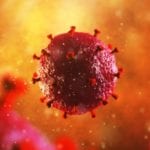 Weird Stuff
Weird Stuff  Weird Stuff
Weird Stuff  Politics
Politics 10 Political Scandals That Sent Crowds Into the Streets
 Weird Stuff
Weird Stuff Ten Bizarre Facts About The Doge Meme
 Our World
Our World 10 Ways Your Christmas Tree Is More Lit Than You Think
 Movies and TV
Movies and TV The 10 Coolest Stars to Set Sail on The Love Boat
 History
History 10 Things You Didn’t Know About the American National Anthem
 Technology
Technology Top 10 Everyday Tech Buzzwords That Hide a Darker Past
 Humans
Humans 10 Everyday Human Behaviors That Are Actually Survival Instincts
 Animals
Animals 10 Animals That Humiliated and Harmed Historical Leaders
 History
History 10 Most Influential Protests in Modern History
 Weird Stuff
Weird Stuff 10 Funny Ways That Researchers Overthink Christmas
 Politics
Politics 10 Political Scandals That Sent Crowds Into the Streets
 Weird Stuff
Weird Stuff Ten Bizarre Facts About The Doge Meme
Who's Behind Listverse?

Jamie Frater
Head Editor
Jamie founded Listverse due to an insatiable desire to share fascinating, obscure, and bizarre facts. He has been a guest speaker on numerous national radio and television stations and is a five time published author.
More About Us Our World
Our World 10 Ways Your Christmas Tree Is More Lit Than You Think
 Movies and TV
Movies and TV The 10 Coolest Stars to Set Sail on The Love Boat
 History
History 10 Things You Didn’t Know About the American National Anthem
 Technology
Technology Top 10 Everyday Tech Buzzwords That Hide a Darker Past
 Humans
Humans 10 Everyday Human Behaviors That Are Actually Survival Instincts
 Animals
Animals 10 Animals That Humiliated and Harmed Historical Leaders
 History
History 10 Most Influential Protests in Modern History
10 Parasites And Pathogens That Control The Minds Of Their Human Hosts
Parasites and pathogens are pretty terrifying things. Immune systems serve to mount a defense against these elusive little creatures. This is, in fact, how sexes came to be, as a means to mix the genes necessary to stir up the genetic pot, creating more stout and powerful immune systems as various microscopic invaders adapted to override the host’s bodily defenses.[1]
This evolutionary arms race has been a battle between predators and prey of all sizes and on all scales to come up with the most effective way to survive and procreate. Whenever one side gets stronger, the other adapts and comes up with a new, clever way to beguile its foe and succeeds for a while—until it’s inevitably outdone again. This has also happened with many plagues, like the bubonic plague, throughout the long path of history.
These days, parasites and pathogens have developed some pretty interesting ways to procreate and/or move on to the next stage of their life cycle—including hijacking the minds of their hosts. These bodily invaders control their hosts’ behavior, forcing them subtly into actions which will result in an opportunity for them to spread or reproduce. Here are ten parasites and pathogens which control the minds of humans.
10 Trypanosoma Brucei

Trypanosoma brucei is a species of protozoa. It is a blood parasite that infects a slew of animals and occasionally humans, too. Its life cycle is rather long, starting off in tsetse flies, which bite humans. Then it enters into the human’s lymphatic system, and from there, it transfers into the bloodstream.
An infection from this parasite can cause sleeping sickness, which can harm both animals and people and comes in two separate stages of symptoms. The early onset of the infection comes on like many other diseases, with joint pain, muscle pain, fever, and swollen lymph nodes, while the second stage causes behavioral changes and extreme lethargy as the parasite begins to attack the spine and brain. Ultimately, T. brucei can kill you.
It should be noted here that the goal of many of these bloodstream parasites seems to be to render its host compromised without killing it. A dead host isn’t as likely to spread the parasite and help complete the life cycle, so rather than killing indiscriminately, it’s advantageous for a parasite to simply weaken its host, making it the potential prey of other animals which are necessary for the parasite to reproduce.[2]
9 Intestinal Bacteria

Yes, the very same intestinal bacteria that you’ve likely had your entire life and have almost never even thought about is capable of causing some pretty unusual changes in your mental state. Furthermore, these bacteria can play a pretty vital roll in very human problems, such as depression and anxiety, it seems.[3] Science has long noted the link between microbiota, the bacteria living in the gut, and animal behavior, mainly in rodents and chimpanzees.
But recent human studies have divided people into distinct groups based on the presence of different bacteria in their guts in starkly different amounts to determine the potential impact of intestinal bacteria on human mood. They monitored the subjects with fMRI machines as well as other equipment to record the responses of their brains to imagery. One group had more Bacteroides, while the other group had more Prevotella, two genera of bacteria that live in the intestines of humans and are thought to alter mood.
When showed images of emotionally charged material, the brains of those in the Prevotella group lit up, indicating that they were responding more intensely. Beyond this, the Prevotella group presented more anxiety and depression, as well as other negative emotions. While this work is far from definitive, it’s extremely safe to assume that, like our primate relatives, gut bacteria plays a roll in the regulation of the moods of humans as well.
8 Toxoplasma Gondii

Toxoplasma gondii, the parasite which causes the disease known as toxoplasmosis, passes through both humans and cats. Beyond being just troublesome, especially in small children, it can also control the minds of the organisms it inhabits. Toxoplasmosis can do some serious damage to those with compromised immune systems, such as the elderly, HIV patients, and those with other diseases which cause one to become immunocompromised. Even though the parasite is only believed to reproduce when it’s inside cats, it still manages to make its way into humans through the feces of cats (when handled) as well as when it infects other animals that we consume.
This parasite affects the behavior of rats, mice, and other rodents. Seeing as they only reproduce inside the bellies of cats, they hijack the minds of the rodents, which are commonly prey for cats, and give these animals a sense of fearlessness, making them unafraid of their cat predators.
But research shows that this parasite also affects the behavior of humans as well. Studies suggest that it promotes risky behaviors in people, much like the rodents, and causes other marked behavioral changes. Not only are people infected with the parasite willing to take on more risky life ventures, but experiments have shown that they are even more willing to drink a surprise, mystery fluid when presented it by scientists, without being told what it is, and are generally willing to commit themselves to other unusual, risky behaviors. It seems that the natural human skepticism is reduced in those whom Toxoplasma gondii calls home.[4]
7 More Intestinal Microflora

Yet again, we find that microorganisms in the gut can control the minds of their host humans. This time, it’s not the mood that these life-forms can affect or modulate but cravings. For instance, some people love chocolate, while others are more indifferent. The latter can actually have gut bacteria which are sort of “immune” to chocolate—that is, the microbes don’t like it very much, and thus, they don’t cause the cravings. These bacteria can have some pretty far-reaching effects: Studies have shown that, all things being equal, obese people have gut bacteria that are different and distinct from people of a more moderate weight.
Sugar cravings, in a way, actually feed themselves by feeding the organisms that cause them. Candida is a type of yeast that grows in the gut and particularly loves to feed on the sugars that we take in.[5] When these little fungi grow too much, they emit chemicals which are likely to cause the person to crave more sugar, thus continuing the cycle of the microflora themselves. In a weird way, they hijack your mind to give you sugar cravings because they’re having sugar cravings, and they have evolved to emit chemicals which cause you to have the same sugar cravings that they do—so you’ll feed them.
6 Strep Throat

Strep throat, or rather the bacteria that cause it, can lead to some pretty unusual and sometimes lasting behavioral changes in people, especially children. Over the years, science has begun to tie together the link between strep throat and ongoing behaviors that sometimes, in some rare cases, seem to last. In most people, antibiotics or the immune system simply clear strep throat, and they go on with their lives, but that isn’t always the case. Sometimes, children suffer from nervous tics and even full-blown obsessive-compulsive disorder after the pathogen takes hold of them.
This condition is known as PANDAS, short for pediatric autoimmune neuropsychiatric disorder associated with streptococcal infection. It can present as some pretty severe anxiety and other mood disturbances, like separation anxiety or a massive fear of bugs or germs. While OCD and other disorders tend to develop over time, PANDAS comes on seemingly overnight and strikes without warning. This leads researchers and doctors to believe it has something to do with strep throat controlling and affecting the mind of its host.[6]
5 Rabies

When people think of a disease that alters the minds of animals and people, usually rabies comes to mind, if not Toxoplasma gondii. Rabies is a virus that affects the brain and spine, thus dealing some pretty hefty damage to its host organism before almost always killing it.[7] Rabies lives in the saliva of infected humans and animals, which then transmits to other hosts when one bites the other.
Humans who are bitten go through some interesting behavioral changes which help the virus reproduce, just like what happens with other animals. Organisms carrying the rabies virus tend to become hyperaggressive and agitated, and most mammals become more brazen and willing to bite, even becoming unusually brave to do so. Humans can suffer delirium and hallucinations as well as flu-like symptoms at first. But when the disease takes hold, the virus is almost always fatal, with fewer than ten people reported surviving the clinical stage of rabies in the United States—ever.
Even more bizarre is that the rabies virus causes hydrophobia, an extreme fear of water. Seeing as rabies lives in the saliva of the infected, this makes complete sense—hosts which are afraid of water won’t wash the virus out of their mouths, making it more capable of transmission and reproduction. The evolutionary arms race at work.
4 Naegleria Fowleri

Naegleria fowleri is a terrifying little critter, an amoeba that goes straight for the brain upon its infection of its host. It is also known as the brain-eating amoeba, and it feasts on bacteria. Even scarier, it lives in water and can travel up through the nose and into the brain, where it does its damage, usually ultimately killing a person. A simple trip to the lake or even contact with water from around your dwelling can expose you to this parasite.
The initial symptoms of this tiny beast begin anywhere between one and nine days after exposure, usually starting at about five days, and can include headache, nausea, vomiting, and basic flu-like symptoms at first. But then in can develop into a lack of attention to people and surroundings, as well as vertigo or loss of balance, hallucinations, and eventually death.[8]
3 Malaria

One of the most brutal and unforgiving diseases of all time, malaria also has one of the most interesting life cycles. Malaria is transmitted largely through mosquito bites. When a female mosquito bites a person carrying malaria, they get it, and then they go bite someone else and spread it to them. Pretty simple. See, Plasmodium falciparum and Plasmodium vivax, two of the five species of Plasmodium which cause malaria in humans, spend part of their life cycle in humans and the other part in mosquitoes, making it essential for the organism to transmit to both mosquitoes and humans.
But where this process gets interesting is the cravings that malaria can cause in its host organisms. Malaria also relies heavily on sugar, the main substance of the mosquito diet, to complete its life cycle, and mosquitoes actually bite you to obtain your blood’s sugar. The parasites themselves are also evidenced to survive on sugar in each organism, both the mosquito and the human being. Aside from human blood, mosquitoes live largely on nectar and other plant sugars found in the wild to survive.[9]
Malaria has been demonstrated to not only make mosquitoes more hungry, giving them a case of the mosquito munchies, but also give the mosquitoes cravings during various periods of the incubation of the malaria parasites. During the period where the parasite needs to be inside the mosquito, the mosquito will crave the sweet scent of plant nectar, and thus the parasite remains. When it comes time to be transmitted into a human, the mosquito begins to crave human blood and then feasts on a person to aide in the life cycle of the zombie parasite. But that’s not all. Malaria in humans eats up the sugar and hormones in the blood pretty quickly, which can lead to low blood sugar, but it also leads to anemia and vitamin deficiency. And guess what those vitamin deficiencies and anemia cause in humans—sugar cravings.
Malaria controls the mosquito when in the mosquito, giving it cravings for its plant food while the parasite incubates and then making it crave blood when it’s time to travel into a human. From there, malaria eats the sugar in the blood but also causes anemia and vitamin deficiencies, which will cause sugar cravings, which will lead to the human boosting blood sugar levels so that the malaria can get back into the mosquitoes again.
2 Chlorovirus ATCV-1

This nasty little virus has long been known to affect the behavior patterns of mice, causing some pretty severe cognitive deficiencies in them, and it is also known to infect humans. There is a lengthy process by which this virus makes a slew of chemical changes which affect the behavior of its host organisms, but in short, it makes people dumb. Yes, it’s a stupid virus.[10]
Chlorovirus ATCV-1 significantly impairs the cognitive abilities of humans who are infected with it, and if that wasn’t scary enough of an idea, this virus can live inside you for years. Beyond that, there was a small study on the virus in the United States, which concluded that 44 percent of the participants, in fact, had the virus, which typically lives in algae but tends to reside in the throat in humans. So there actually is a stupid virus. Who would have thought?
1 Influenza

Science is learning new things every day about human behavior, and in today’s world of vaccines, how humans respond to them is no exception. It’s coming to light that flu vaccines actually increase the likelihood of humans becoming social—that is, the flu vaccine makes humans more interested in socializing. Even more interesting than this, studies have noted that the flu spreads through our social networks (the real-life ones, not the online ones) and varies depending on which network you’re exposed to. Who you hang out with might be a determining factor in whether or not you’ll catch one of the most devastating diseases in world history.
But beyond just the vaccine, the influenza virus also hijacks the mind of its host subtly, which is likely why people who’ve just received the vaccine demonstrate the same phenomenon. The flu itself makes people want to be more social, which makes perfect sense, as a socially outgoing host is a perfect way for the virus to spread to other people.[11] While the mechanisms aren’t quite clear yet, we do know that people with the flu become more interested in seeking out and engaging with other people, and considering how often parasites and pathogens control the minds of their hosts, its quite probable that we’ll learn the mechanism through which the flu makes us want to fraternize so that it can come out to play.
Read about more creepy parasites on Top 10 Parasites That Could Be Infecting You Right Now and 10 Disturbingly Weird Parasites.








